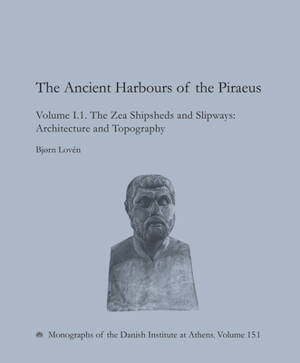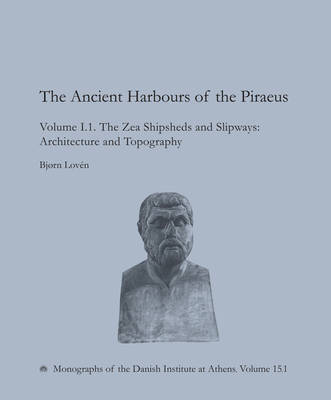
- Retrait gratuit dans votre magasin Club
- 7.000.000 titres dans notre catalogue
- Payer en toute sécurité
- Toujours un magasin près de chez vous
- Retrait gratuit dans votre magasin Club
- 7.000.0000 titres dans notre catalogue
- Payer en toute sécurité
- Toujours un magasin près de chez vous
The Ancient Harbours of the Piraeus
Volume I.1. the Zea Shipsheds and Slipways, Architecture and Topography
Bjorn Loven, Mette Schaldemose
100,45 €
+ 200 points
Format
Description
"...the quantity of data collected and the excellent study of the architecture of the naval installations of Zea, accompanied by top-quality graphic documentation, represent an essential tool for anyone who wants to study the topography and spatial organization of harbour districts in port cities of the ancient world." -- Carmelo Di Nicuolo, University of Rome 2 "Tor Vergata" - Italian Archaeological School at Athens, Bryn Mawr Classical Review (2013.02.39) The immense historical importance of the navy of Classical Athens is evident in her struggles against Persia ending at the Battle of Salamis, the city's central role in the First Delian League, the decades of Athens' supremacy as an imperial naval power, the victories and vicissitudes of the Peloponnesian War, and the revival and fall of the Athenian navy during the 4th century BC. With Athens navy's importance came that of her harbour city, the Piraeus, where naval bases in Zea, Mounichia and Kantharos Harbours housed hundreds of triremes that served as the primary arm of Athenian power. This first volume of the peer-reviewed Ancient Harbours of the Piraeus series is the culmination of the first phase of archaeological investigations by the Zea Harbour Project, 2001-2006. The study focuses on Zea Harbour, where two previously unidentified building phases were discovered: the unroofed Phase 1 slipways, most likely belonging to the early 5th century BC, and the Phase 2 shipsheds built later in that century. This is the first solid material evidence of the naval installations dating to the zenith of Athenian military, political and cultural hegemony. In addition, shipsheds (Phase 3) that have been documented previously by W. Dorpfeld and I.C. Dragatsis (1885) are dated to 375-350 BC (terminus post quem) and architecturally redefined as double-unit shipsheds designed to house two ships stored end to end. Also among the principle discoveries are the establishment and measurement of relative changes in sea level since antiquity - a key piece of the puzzle, and one that has led to a broader understanding of the topography of the ancient harbours of the Piraeus. The naval installations built in Zea Harbour in the 4th century BC were amongst the largest building complexes of antiquity and were essential for maintaining an operational fleet. In the late 330s BC, the shipsheds at Zea extended over an area of more than 55,000 m2; including the shipsheds in Kantharos and Mounichia Harbours, the total area covered by the shipshed complexes in the Piraeus was close to 110,000 m2. Hundreds of colonnades and side-walls carried the massive tiled roofs of these shipsheds, which clearly conveyed Athens' determination to 'monumentalise' and glorify the naval bases that protected the city's fleet of swift triremes at the height of her power.
Spécifications
Parties prenantes
- Auteur(s) :
- Editeur:
Contenu
- Nombre de pages :
- 488
- Langue:
- Anglais
- Collection :
- Tome:
- n° 15
Caractéristiques
- EAN:
- 9788771240078
- Date de parution :
- 08-03-12
- Format:
- Livre relié
- Format numérique:
- Genaaid
- Dimensions :
- 234 mm x 277 mm
- Poids :
- 3156 g

Les avis
Nous publions uniquement les avis qui respectent les conditions requises. Consultez nos conditions pour les avis.






